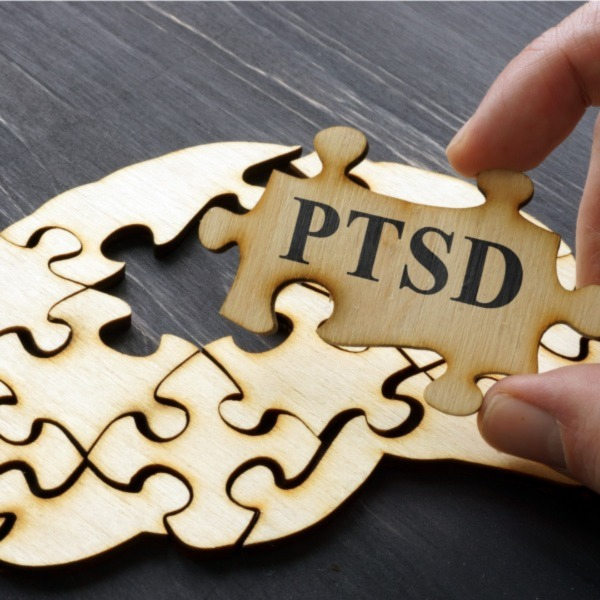
One of the most common physical problems reported by people with post-traumatic stress disorder (PTSD) is chronic pain.
In one study of volunteer firefighters with PTSD, approximately 50% were having pain (mainly back pain) compared with only about 20% of firefighters without PTSD. Other research has found that, in some studies, the prevalence rate of chronic pain in patients with a primary diagnosis of PTSD is as high as 80%.2.
What’s more, people with PTSD often have other mental health disorders that can contribute to or worsen their pain, such as depression and anxiety. All of these factors can make it difficult to manage pain effectively.
There are a number of theories about why chronic pain is so common among people with PTSD, but the most likely explanation is that the stress of trauma can actually change pain perception, including the way pain is processed in the brain.
When you experience a traumatic event, your nervous system goes into “survival mode.” This causes a number of changes in your body, including an increase in the level of stress hormones like cortisol. These changes can make you more sensitive to pain and can also cause changes in the way pain is processed in the brain.
In one study, researchers found that people with PTSD had changes in the way their brains processed pain signals. These changes were similar to those seen in people with chronic pain disorders like fibromyalgia and migraines.
What is Post-Traumatic Stress Disorder?
Post-traumatic stress disorder (PTSD) is a mental health condition that can develop after experiencing or witnessing a traumatic event.
According to the National Institute of Mental Health, it’s estimated that 2-20% of all people who have experienced traumatic events develop PTSD. In Australia, around 1-2% of adults experience PTSD each year, while approximately 12% experience PTSD in their lifetime.
What is a traumatic event?

Normal stressors experienced in daily life, such as paying the bills or the car breaking down, and even major life stressors, such as buying a house, do not constitute serious traumatic events.
Serious traumatic events, that could lead to the development of PTSD, could include (but are not limited to):
- War zone exposure
- Physical or sexual assault
- Serious accidents
- Natural disasters
- Torture
What are the symptoms experienced in PTSD?
Persistent re-experiencing of the traumatic event
Persistent re-experiencing of the traumatic event, indicated by one or more of the following:
- Recurrent distressing recollections of the event (intrusive thoughts)
- Recurrent distressing dreams of the event
- Acting or feeling as if the event was recurring (e.g. flashbacks)
- Psychological distress to cues resembling event
- Psychological reactivity to cues resembling event
Avoidance symptoms
Persistent avoidance of stimuli associated with the traumatic event, as indicated by one or more of the following:
- Avoidance of thoughts or feelings that are reminders of the event
- Avoidance of activities, places, people or conversations that are reminders of the event
Negative alterations in cognition and mood

Persistent negative alterations in cognitions and mood indicated, by two or more of the following:
- Markedly diminished interest or participation in significant activities
- Feelings of detachment or estrangement from others
- Inability to experience positive emotions
- Inability to recall important aspects of the trauma
- Exaggerated negative beliefs or expectations
- Distorted blame of self or others about the trauma
Hyperarousal symptoms
Persistent symptoms of increased arousal are indicated by two or more of the following:
- Sleep disturbance
- Irritable behavior or outbursts of anger
- Problems with concentration
- Hypervigilance
- Reckless or self-destructive behavior
- Exaggerated startle response
Why does PTSD and chronic pain so often occur together?
There are a few possible explanations.
One reason is quite obvious – many traumatic events cause physical injuries that lead to chronic pain. Think about it – living through a natural disaster, being the victim of physical assault, or serving in combat can inflict serious bodily harm that leads to long-term pain.
But underlying vulnerabilities may also play a role in developing both conditions. Studies suggest that there are shared risk factors – such as impulsivity, depression, anxiety, and sleep disturbances – that can predispose someone to both PTSD and chronic pain.3,4 It’s also worth noting that people who experience more severe trauma are more likely to develop both chronic pain and PTSD.5
Shared Vulnerabilities
One explanation for the link between PTSD and chronic pain is that they may share underlying vulnerabilities. For example, both conditions have been linked to genetic factors, trauma exposure, and psychological distress. Additionally, people with PTSD are more likely to develop other mental health conditions, such as depression and anxiety, which are also risk factors for chronic pain. Therefore, it is not surprising that PTSD and chronic pain often occur together.
Physiological Changes
Another explanation for the link between PTSD and chronic pain is that trauma can lead to changes in the body that result in increased sensitivity to pain. For example, trauma has been shown to cause changes in the nervous system that can make people more sensitive to pain. Additionally, people with PTSD often have trouble sleeping, which can further increase their sensitivity to pain.
Treatment overlap between PTSD and chronic pain

Post-traumatic stress disorder (PTSD) and chronic pain are both conditions that can have a profound impact on a person’s quality of life. Disruptions in sleep, concentration, and mood are common in both conditions, and both can be difficult to treat.
There are several therapies that are effective for treating PTSD, including cognitive behavioral therapy (CBT), cognitive processing therapy, prolonged exposure, and eye movement desensitization and reprocessing. These therapies can also be helpful for treating comorbid chronic pain.
In addition, pharmacotherapy treatments such as selective serotonin reuptake inhibitors (SSRIs) and venlafaxine have been shown to be effective for treating both PTSD and chronic pain. As a result, there is considerable overlap between the treatment of these two conditions.
If you are experiencing both chronic pain and symptoms of PTSD, it is important to seek professional help so that you can receive treatment for both conditions.
Disclosure: The information in this article is not intended to replace your doctor’s medical advice, diagnosis or treatment. If you require more information, or have any questions, please speak to your doctor/ specialist.
References:
- Australian Department of Veterans’ Affairs. Managing Post-traumatic stress disorder. https://www.dva.gov.au/health-and-treatment/injury-or-health-treatments/mental-health-care/managing-posttraumatic-stress
- DSM V. Diagnostic and Statistical Manual of Mental Disorders by the American Psychiatry Association.
- Posttraumatic stress disorder in the National Comorbidity Survey. (1995). Posttraumatic stress disorder in the National Comorbidity Survey., 52(12), 1048–1060. DOI: 10.1001/archpsyc.1995.03950240066012
- Meta-analysis of the efficacy of treatments for posttraumatic stress disorder. (2013). Meta-analysis of the efficacy of treatments for posttraumatic stress disorder., 74(6), e541–50. http://doi.org/10.4088/JCP.12r08225
- Lehinger E, Reed DE, Nabity P, Brackins N, Villarreal R, McGeary C, Blount T, Cobos B, Jaramillo C, Eapen BC, Pugh MJ, Potter J, Peterson A, Young-McCaughan S, Houle T, McGeary DD. An Examination of Chronic Pain Indices and the Updated Posttraumatic Stress Disorder Checklist for Diagnostic and Statistical Manual of Mental-Disorders-Fifth Edition. Mil Med. 2021 Nov 2;186(11-12):e1199-e1206. doi: 10.1093/milmed/usaa529. PMID: 33301040; PMCID: PMC8902930.
- Fishbain DA, Pulikal A, Lewis JE, Gao J. Chronic Pain Types Differ in Their Reported Prevalence of Post -Traumatic Stress Disorder (PTSD) and There Is Consistent Evidence That Chronic Pain Is Associated with PTSD: An Evidence-Based Structured Systematic Review. Pain Med. 2017 Apr 1;18(4):711-735. doi: 10.1093/pm/pnw065. PMID: 27188666.
- A comparison of cognitive-processing therapy with prolonged exposure and a waiting condition for the treatment of chronic posttraumatic stress disorder in female rape victims. (2002). A comparison of cognitive-processing therapy with prolonged exposure and a waiting condition for the treatment of chronic posttraumatic stress disorder in female rape victims., 70(4), 867–879. http://doi.org/10.1037/0022-006x.70.4.867

Dr. Ilonka Meyer is the Clinical Director and Founder of MindBodyPainSpecialists. She also holds an appointment as Acting Director of the Pain Service and Pain Specialist at the Austin Hospital in Heidelberg, Melbourne. Ilonka has a strong interest in interventional pain treatments, peri-operative pain and medication optimisation and cancer pain.
Ilonka is skilled in Clinical Research, Medical Education, Coaching, and Healthcare Management. Her main research focus lies in interventional pain medicine in the peri-operative population, cancer pain and the health economic benefits of pain and medication optimisation in patients both pre-and postoperatively.
